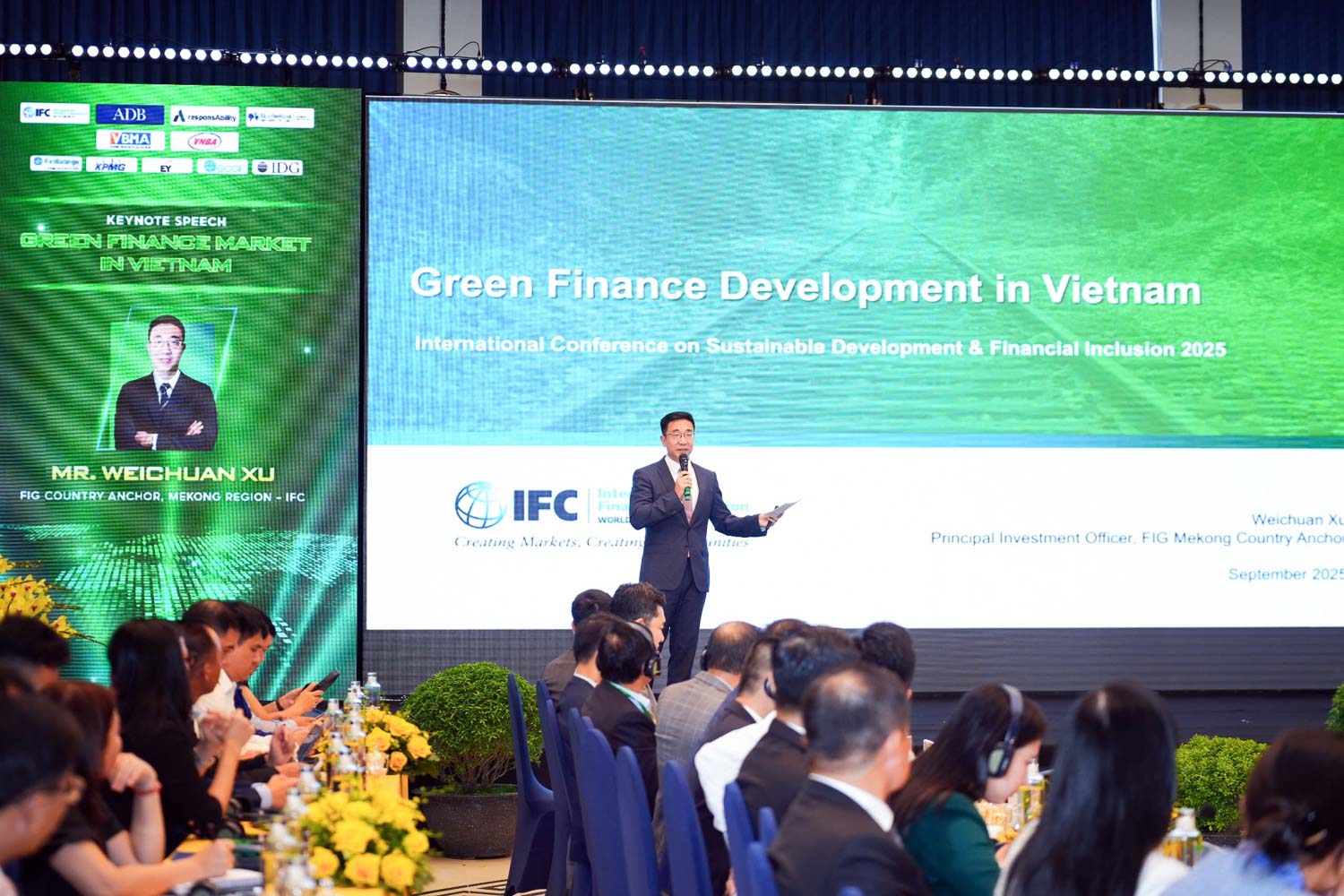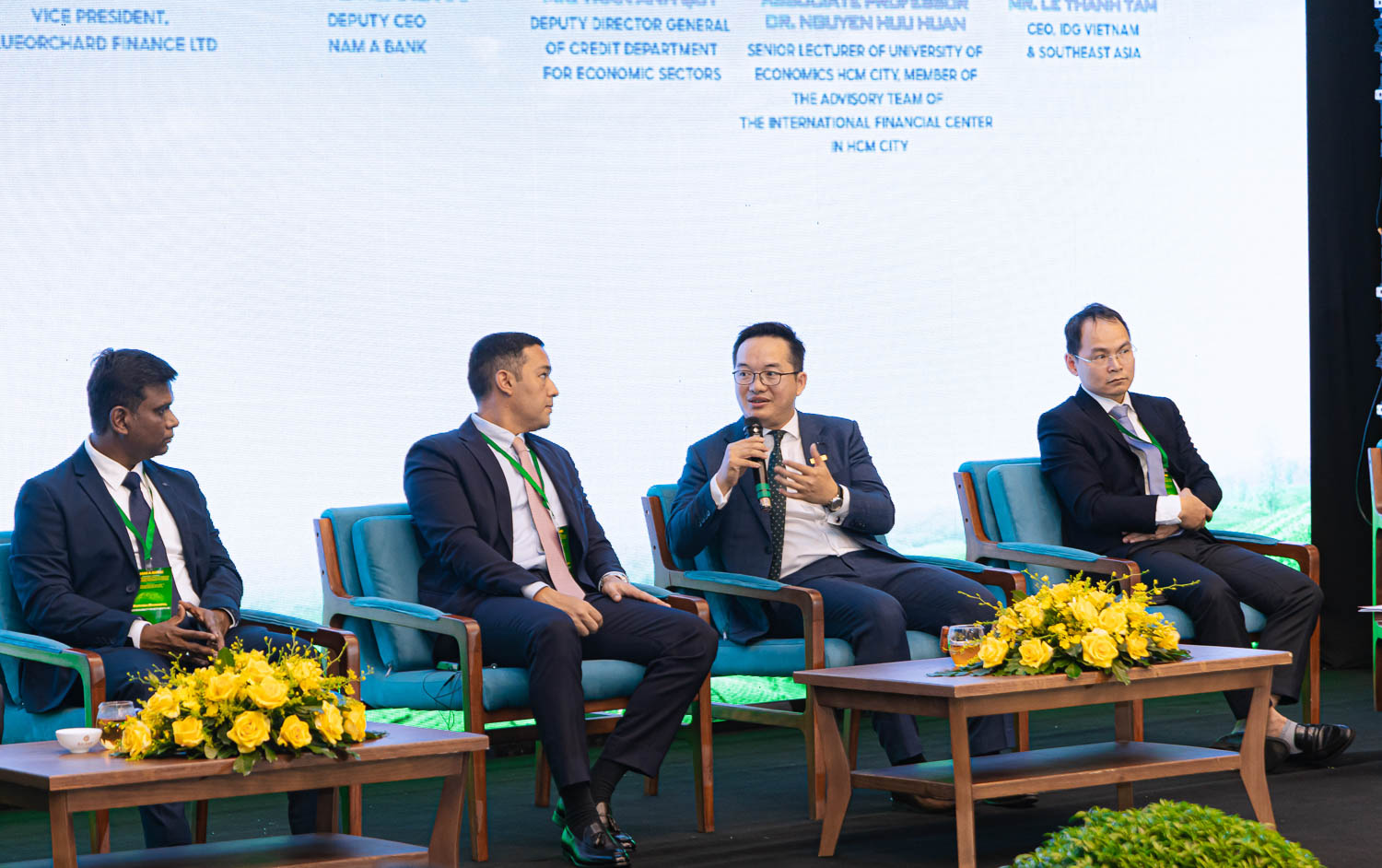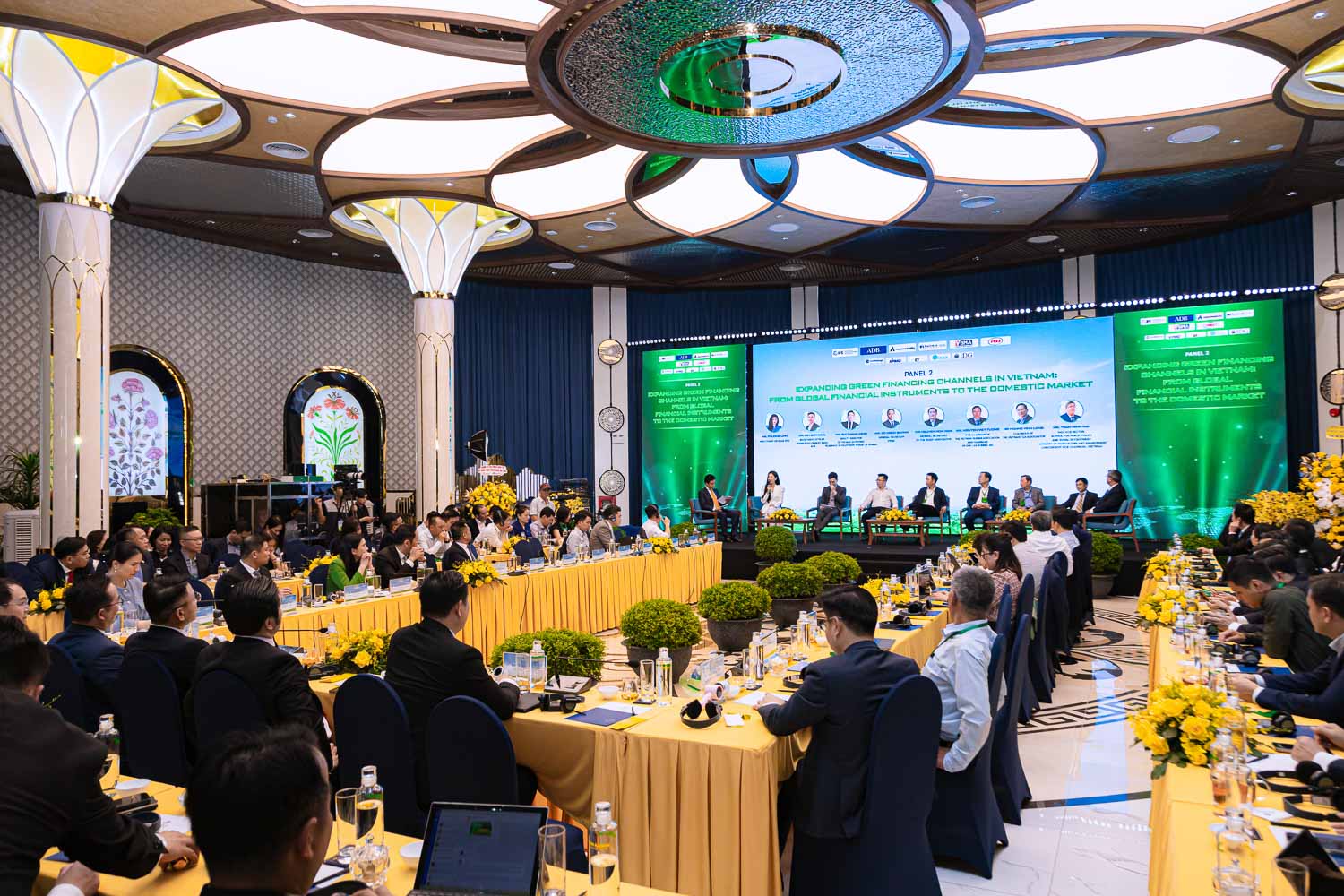An international conference organized by Nam A Bank in Xuan Huong – Dalat Ward, Lam Dong Province, on September 5 brought together policymakers, bankers, business leaders, and experts to discuss Vietnam’s progress and debate what must change to unlock green finance.
Their discussions revealed important insights into the barriers holding back investment, the opportunities for the banking system, and the structural reforms that could enable Vietnam to become a regional hub for sustainable capital.
The forum went beyond the issue of green capital, extending its focus to financial inclusion, transparent governance, and international integration. It featured three panel discussions: unlocking global green financing, expanding green financing channels in Vietnam: from global financial instruments to the domestic market, and enhancing capacity and access to green finance for the private sector: practical lessons learned.
Vietnam is intensifying its efforts to attract international green capital as it pursues a low-carbon economy and financial inclusion and pledged to achieve net-zero emissions by 2050. However, meeting these goals requires an economic transformation driven by capital flows into sustainable projects. Yet mobilizing the scale of investment needed remains one of the country’s most pressing challenges.
The World Bank estimates that Vietnam will need around US$368 billion by 2040 to achieve its climate goals. This translates to roughly 6.8% of GDP annually. Yet the domestic green finance market remains small compared with demand.
The financing gap
Over the past decade, Vietnam has laid a legal foundation for green finance. In 2015, the State Bank of Vietnam issued Directive 03, which encouraged credit institutions to prioritize environmentally friendly projects. The Government subsequently introduced strategies for green banking through 2030 with a vision to 2045.
The 2020 Law on Environmental Protection created the basis for more stringent environmental assessments. Following this, Circular 17 established requirements for banks to manage environmental and social risks in their lending activities. These regulations were designed to integrate sustainability into the financial system and encourage capital allocation toward environmentally friendly activities.
However, the flow of green capital remains small compared with the country’s needs. Data show that green credit accounts for less than 4.5% of total outstanding loans, while only US$1.16 billion in green bonds has been issued over the past five years. This is well below the estimated US$20 billion per year needed to fund green projects and the broader energy transition.
This gap highlights the structural weaknesses of the domestic financial system. While international investors have shown interest and demand for sustainable finance is rising, Vietnam has yet to establish the mechanisms that can channel sufficient capital toward green projects. Without a deeper market and stronger institutions, the country risks falling behind its climate commitments.
In reality, most green financing in Vietnam has centered on renewable energy projects, which are widely accepted as sustainable and easier to classify under existing frameworks.

Weichuan Xu, FIG country anchor for the Mekong region at International Finance Corporation (IFC), noted that Vietnam lacks a regulatory-level definition of green loans. “There was no clear incentive or compliance to promote green investment in industries such as cement, glass, or other heavy sectors,” Xu said. “So when banks looked at green business pipelines, nearly all opportunities came from renewable energy.”
This narrow scope creates risks. Renewable projects require long-term financing, which many private banks are reluctant to provide. Meanhile, industries such as cement, glass, and heavy manufacturing, which are carbon-intensive but essential to the economy, remain outside most green lending portfolios. Transition finance for these sectors remains underfunded, despite its importance for reducing emissions.
Nguyen Quoc Hung, general secretary of the Vietnam Banking Association, echoed this view, saying the lack of a unified national standard for what qualifies as “green” remains a critical barrier. Without a common taxonomy, investors face uncertainty, and businesses struggle to align with global frameworks.
Opportunities for banks
While current activity is narrow, the potential market for green finance in Vietnam is vast. IFC estimates that nearly US$10 billion will be needed annually through 2030 to meet energy demand and decarbonization goals. This represents a potential US$1.5 billion revenue opportunity by 2025 for banks issuing transition finance products.
Adaptation financing needs are also substantial. The World Bank projects that US$254 billion will be required between 2022 and 2040 for adaptation measures alone. For banks, this could translate into new product lines and sustainable revenue streams if regulatory and market conditions improve.
If Vietnamese banks can expand their capabilities, they could capture a share of this growing market and establish themselves as key players in the country’s sustainable development. But turning this opportunity into reality requires strong institutional capacity and practical strategies.
Turning market potential into practice requires practical strategies at the institutional level. Nam A Bank offered a case study of how a domestic bank is adapting.

Vo Hoang Hai, deputy CEO of Nam A Bank, said that applying international frameworks mechanically is often not feasible. Instead, global standards such as IFC’s green finance criteria must be adapted to Vietnam’s legal and market context.
Hai also stressed the importance of human capital development. Staff need to be trained in environmental and social risk management so they can evaluate projects effectively and ensure compliance after disbursement. Second, banks must work closely with clients to raise awareness of the green transition. Many enterprises view green projects only through the lens of short-term returns, but the transition requires long-term commitment.
Nam A Bank also provides technical assistance to clients, helping them design projects, structure financing, and connect with international markets. By playing this bridging role, the bank strengthens both its own capacity and its clients’ ability to access sustainable capital.
The role of international financial centers
Experiences like Nam A Bank’s show what individual institutions can do. But experts emphasized that Vietnam also needs stronger national mechanisms to attract global green finance.

Nguyen Huu Huan, senior lecturer at the University of Economics HCMC and member of the advisory team of the international financial center (IFC) in HCMC, said establishing an IFC could be pivotal. Such a hub could streamline foreign investment, increase transparency, and act as a hub for promoting Vietnam’s green finance portfolio.
Currently, Vietnamese banks seeking to finance green projects often need to turn to foreign markets. This means negotiating with overseas funds, navigating complex requirements, and absorbing higher transaction costs.
An IFC in Vietnam could change that dynamic. By providing a domestic hub aligned with global standards, such a center would make it easier to raise capital within the country rather than relying on foreign trips or intermediaries.
According to Huan, an IFC would not only simplify funding but also broaden the range of financial products available. It could support the development of green bonds, transition bonds, and carbon credit markets, all of which are essential for financing Vietnam’s net-zero pathway.
The need for a “common language”
Another recurring theme is the absence of a national taxonomy. Without a shared standard for what qualifies as green, businesses and investors face uncertainty.
Do Ngoc Quynh, general executive secretary of the Vietnam Bond Market Association (VBMA), described this as the lack of a “common language.” Without a unified framework, investors face uncertainty in evaluating projects, while businesses struggle to align with both domestic and international requirements.
This gap is not just technical. It directly affects the ability of enterprises to access capital. Without clear definitions, banks and investors cannot determine with confidence whether a project meets sustainability criteria, which limits their willingness to commit funds.
Nguyen Hoai Nam, general secretary of the Vietnam Association of Seafood Exporters and Producers, added that the idea of “green production” is currently misused and interpreted in many different ways. Enterprises want to cut emissions, but they need sector-specific guidance rather than broad regulations.
According to VBMA, the solution lies in the Government issuing a national green taxonomy—a classification system that would define eligible green activities and investments. Such a taxonomy would provide a consistent standard across sectors, allowing policies to be applied more effectively and giving investors greater confidence that projects meet recognized criteria.
Experts also stressed the need for sector-specific emission reduction roadmaps. Each industry, from seafood processing to heavy manufacturing, faces different challenges in reducing its environmental impact. A one-size-fits-all approach would not be sufficient. Detailed pathways would help enterprises align with Vietnam’s broader net-zero by 2050 target, while providing the financial sector with a clear basis for supporting projects.
Vietnam has set ambitious climate targets and made progress in building a policy framework for green finance. Yet the gap between capital needs and current investment remains wide.
Expanding the definition of green finance, building human capacity, creating a national taxonomy, and establishing an international financial center are seen as critical next steps.
With global demand for sustainable investment rising, Vietnam has a strategic opportunity to position itself as a green finance hub in Southeast Asia. But realizing this potential will require coordinated action from Government, banks, businesses, and international partners to unlock the billions needed for the green transition.









